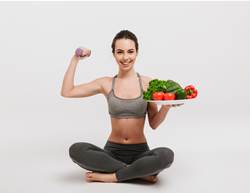You may pump iron in the gym, but the kind you get through food is even more important for your health. The mineral transports oxygen throughout your body, helps form red blood cells, and supports your metabolism. “Too little iron in your diet and you may be feeling cold, tired, and sluggish,” says dietitian Melissa Prest, a spokesperson for the Academy of Nutrition and Dietetics.
Ideally, women should aim for 18 milligrams (mg) per day, while men only need 8mg, says Prest. The best way to get enough is through diet—and yes, it’s true that red meat is an excellent source. Just one 85g serving of lean ground beef packs 2.2mg of it, per the United States Department of Agriculture (USDA).
But what if you want to steer clear of steak? While research shows that red meat provides important nutrients (including iron, muscle-building amino acids, vitamin B12 and zinc), it might also increase your risk of several chronic diseases, including heart disease and even certain types of cancer. Meanwhile, studies show that plant-based diets may do the opposite and lower your risk of health problems down the road.
Luckily, you can find iron beyond a burger, but you’ll need to eat more of the mineral if you’re completely vegan or vegetarian. That’s because there are two types of iron: haem and non-haem iron.
Meat, seafood, and poultry contain both forms, while plant-based or fortified foods contain only non-haem iron. This can be an issue if you’re strictly plant-based, since your body has an easier time absorbing the iron in animal products, according to the National Institutes of Health. (Quick tip: pairing plant-based sources of iron with vitamin C-rich foods can boost absorption.)
The fix: “Vegetarians and vegans should consume around 1.8 times the recommended daily value,” says dietitian Sharon Palmer. For women ages 19 to 50, that works out to about 32 mg of iron per day. The 25 delicious foods on this list, which pack more iron than a serving of beef, can help you hit your daily mark.
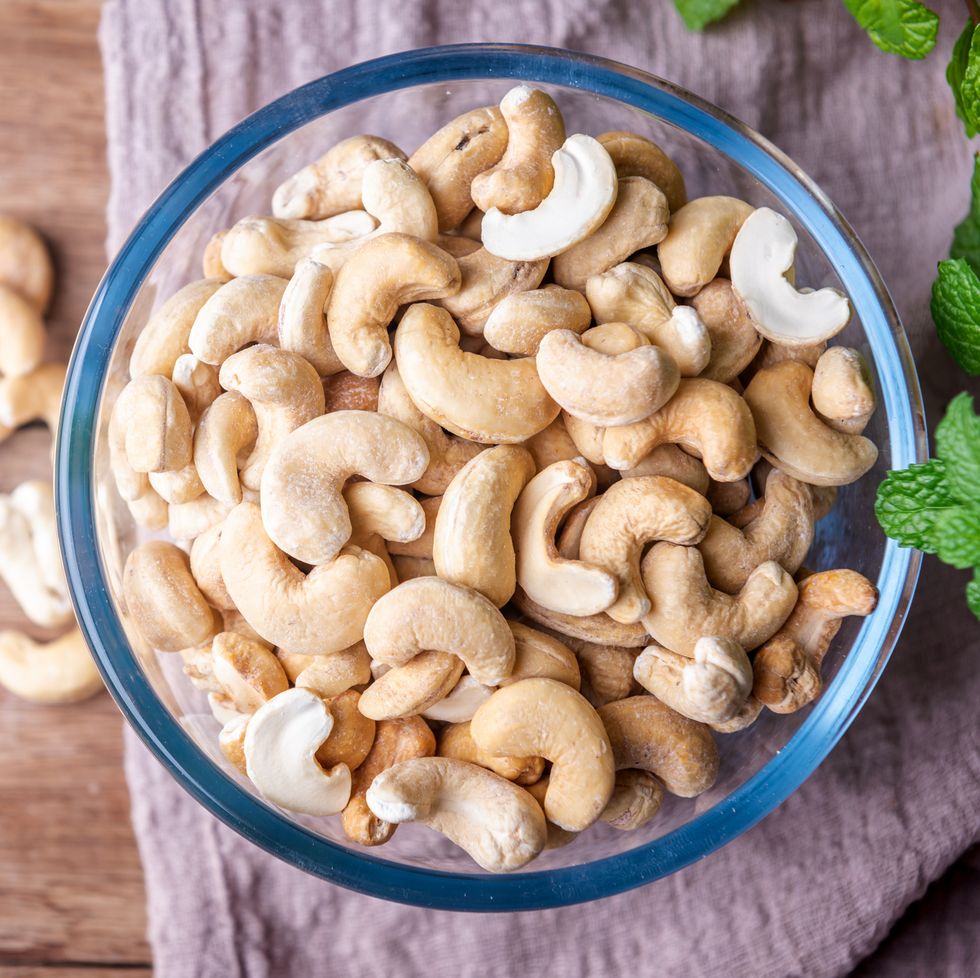
Cashews
Most people know that nuts are a great high-protein snack, but they don’t get enough credit for their iron-boosting abilities. Just 50 grams of raw cashews have almost 3mg of the mineral, reports the USDA. If cashews aren’t your favourite, Planells recommends trying brazil nuts or walnuts, which have similar benefits.

White rice
Just 1/3 cup of white rice has 3mg of iron, says Prest. Serve it with another food on this list, such as beans or chickpeas, and you’ll be close to fulfilling your daily requirement with just one meal.

Bran muffin
Contrary to what diet culture might have you believe, you can enjoy a muffin (and carbs!) as a proper source of nutrition, especially iron, Planells says. One medium oat bran muffin provides 4.75mg of the mineral, plus gut-boosting fibre, reports the USDA.
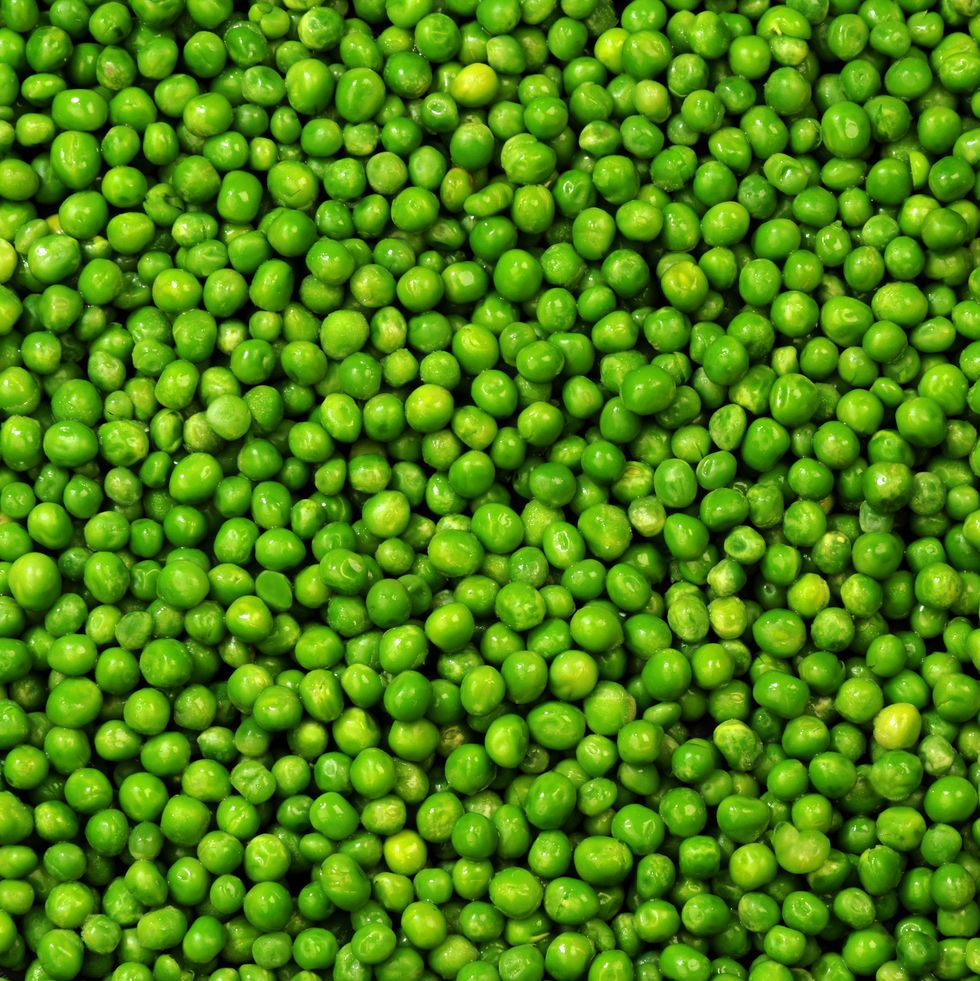
Peas
Planells suggests sprinkling some peas onto your plate for some extra iron. Believe it or not, a cup of the veggies cooked with salt has about 2.5mg. They’re also rich in calcium and magnesium, which is great for bone health.
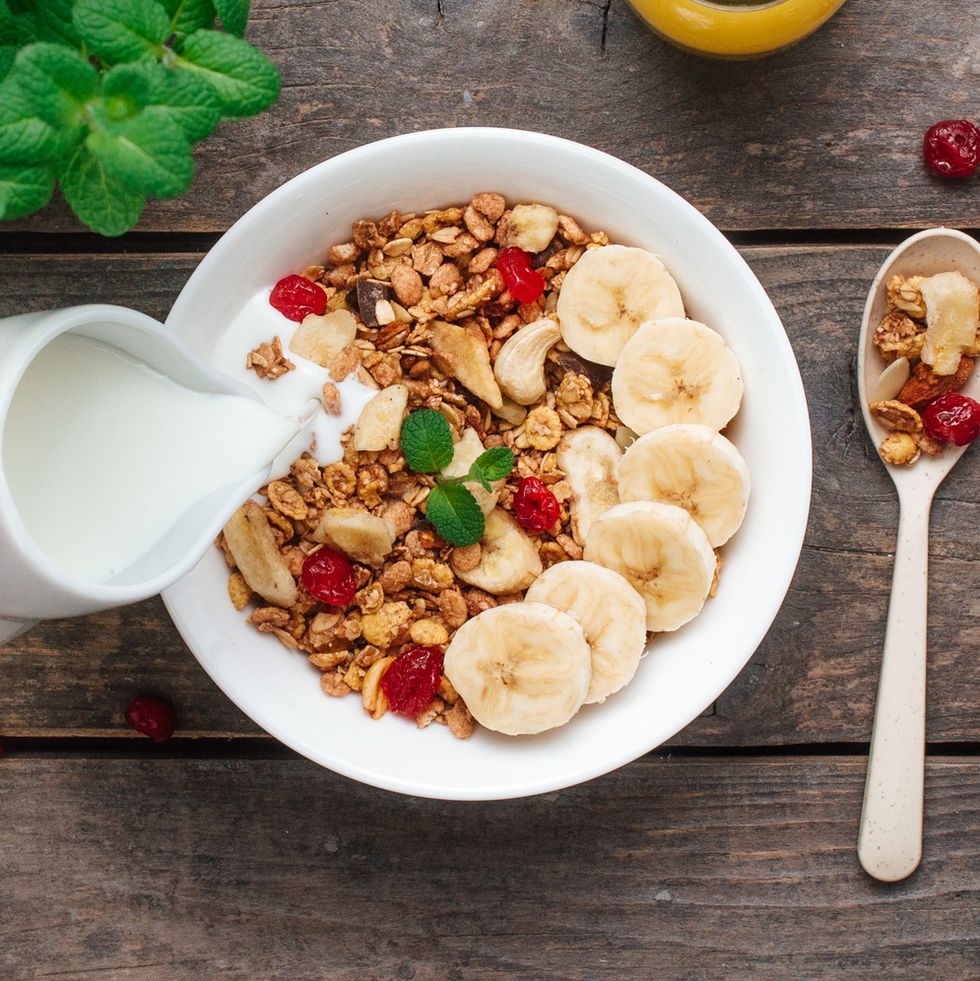
Iron-fortified cereal
Prest says just 3/4 cup of 100% iron-fortified, ready-to-eat cereal has a whopping 18mg of iron, which meets most women’s recommended daily value. If you’re always on the go, this is a quick and easy way to meet your body’s needs.
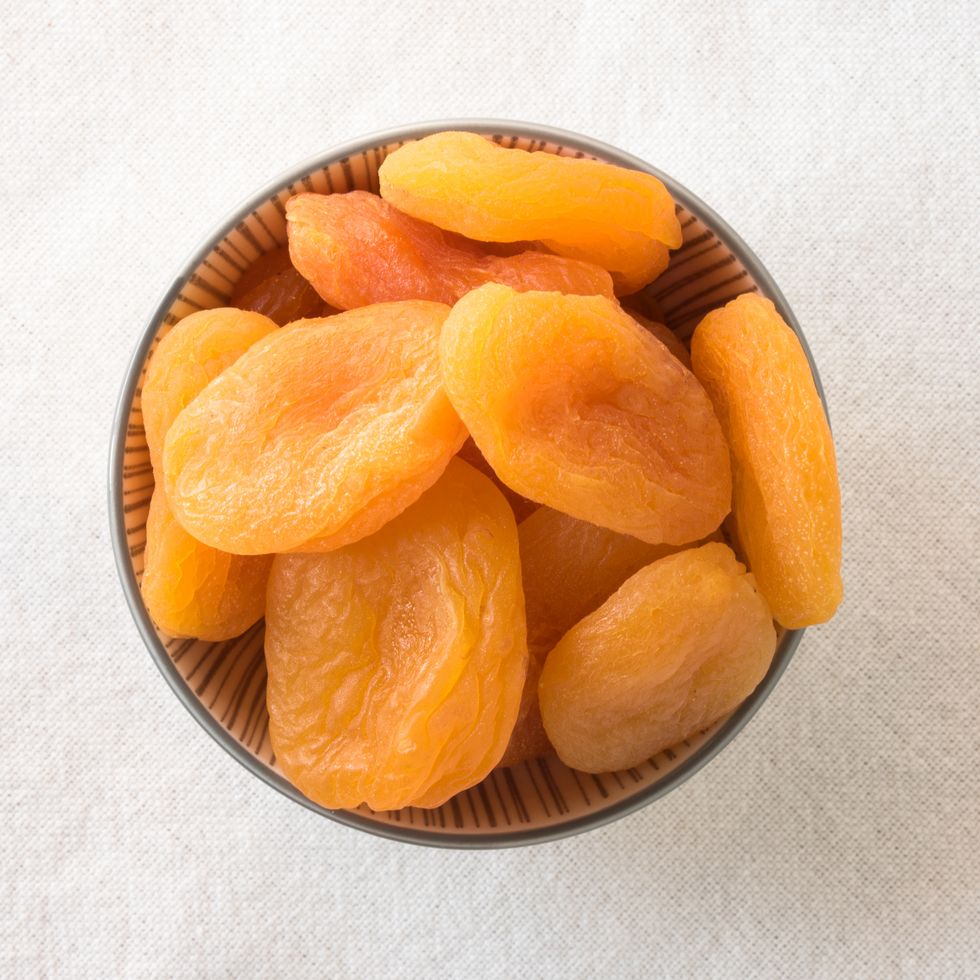
Dried apricots
A cup of dried apricots boasts 3.5mg, reports the USDA, which is why Planells recommends adding the healthy sweet snack to your rotation.
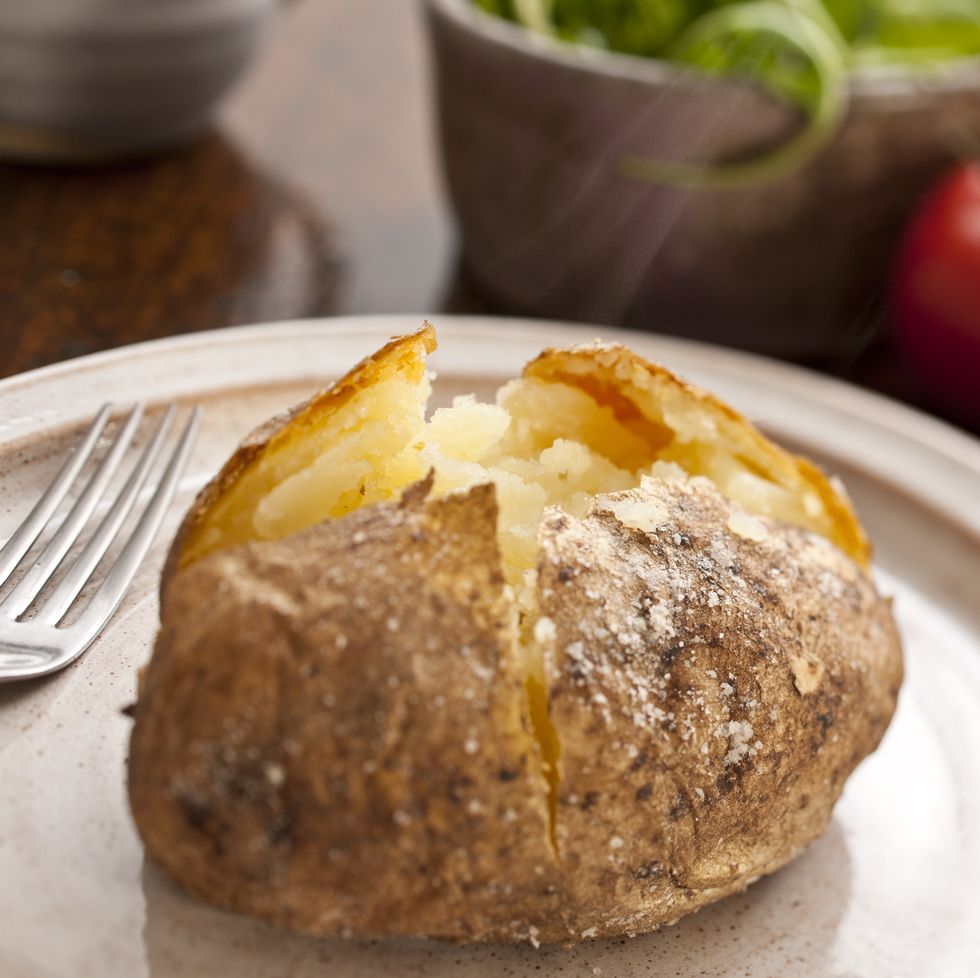
Baked potato
Your favourite side dish is healthier than you might think (as long as you don’t go too crazy with the sour cream and butter). One large baked potato with the skin has just over 3mg of iron, reports the USDA. You’ll get about one third of your daily vitamin C, too. White potatoes are also full of gut-friendly resistant starch, which keeps you feeling full and aids in digestion.
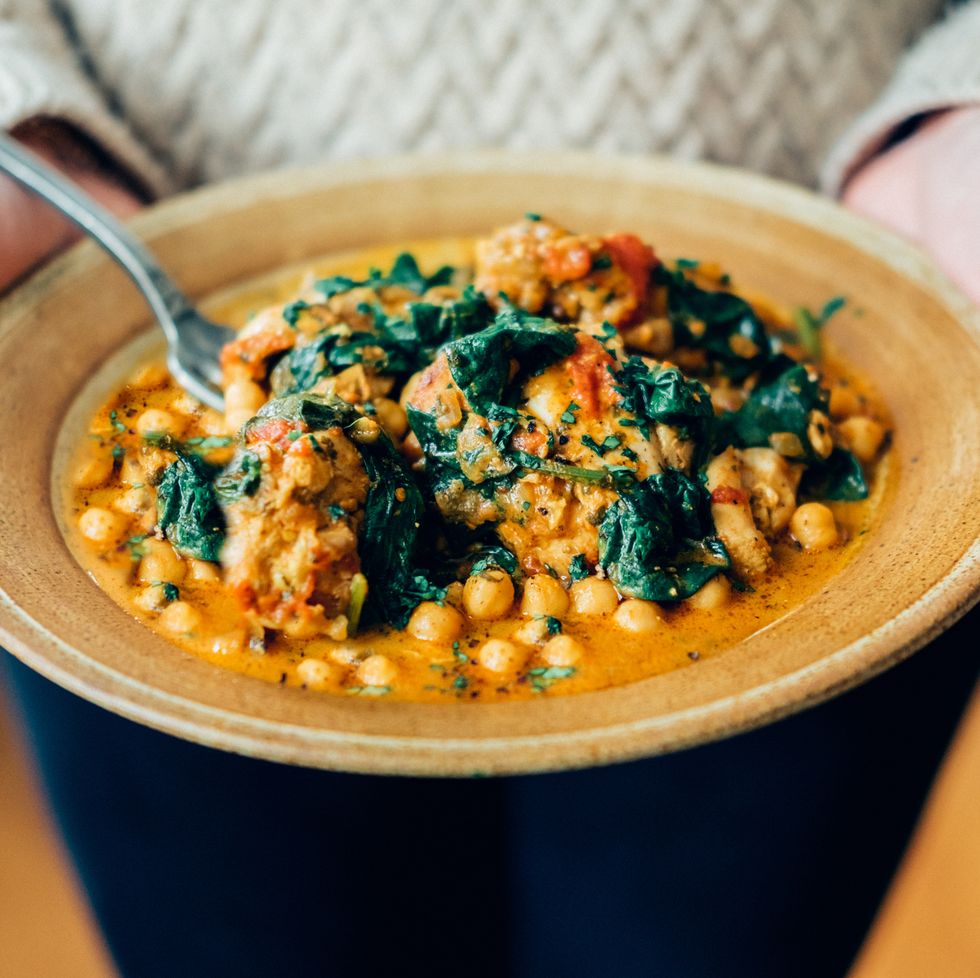
Chickpeas
Spotting a trend here? Legumes are packed with iron and cooked chickpeas with salt are no exception. You get 5mg in two half-cup servings, as well as an impressive 12.5g of fibre, the USDA says. They make an amazing snack when they’re roasted, a satisfying lunch when tossed in a salad, and a surprising dessert ingredient when you want a healthy way to get your sweet fix.
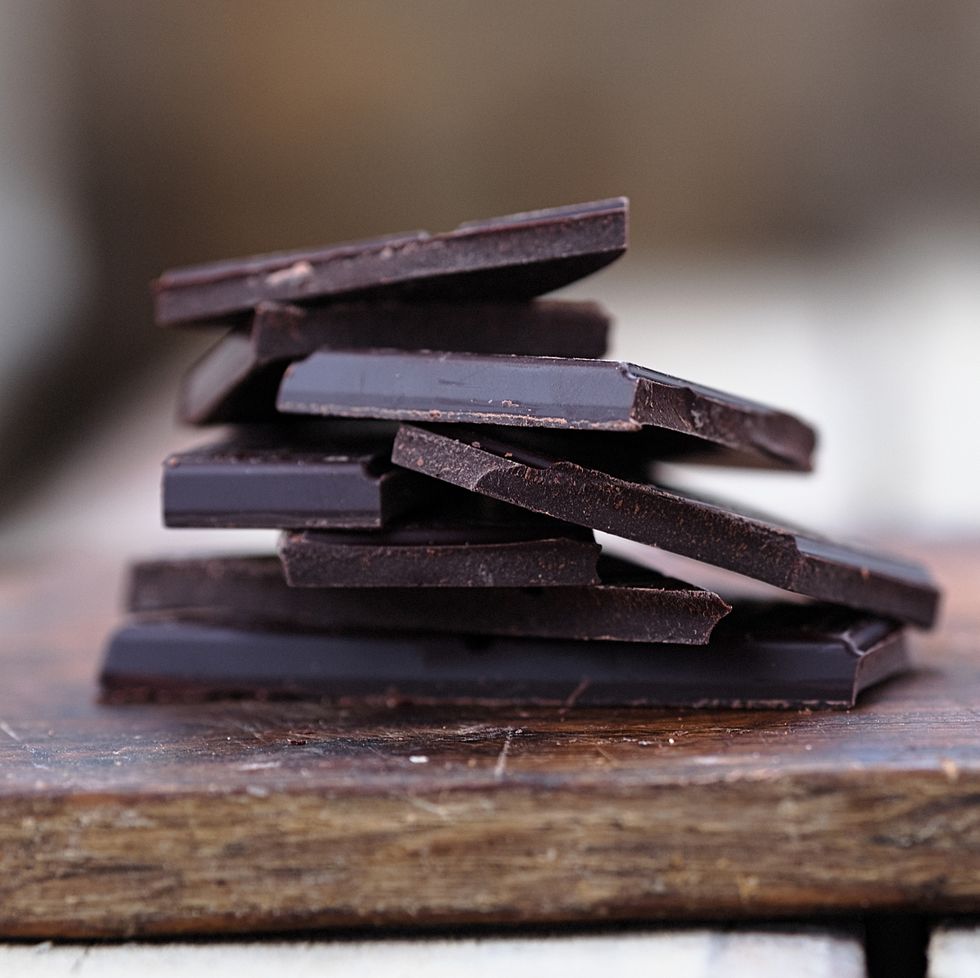
Dark chocolate
Yes, you can enjoy dessert and load up on iron. The USDA says that a typical 28g serving size of dark chocolate packs roughly 3.4 mg of the mineral. A bar that is 70 to 85% cocoa only contains 7g of sugar per (small 28g) serving.

Edamame
Looking for a high-protein snack? Edamame delivers 18g of the muscle-building nutrient in two half-cup servings, reports the USDA. As an added bonus, you’ll get 3.5mg of iron, along with loads of potassium, some fibre, and vitamins C and A.
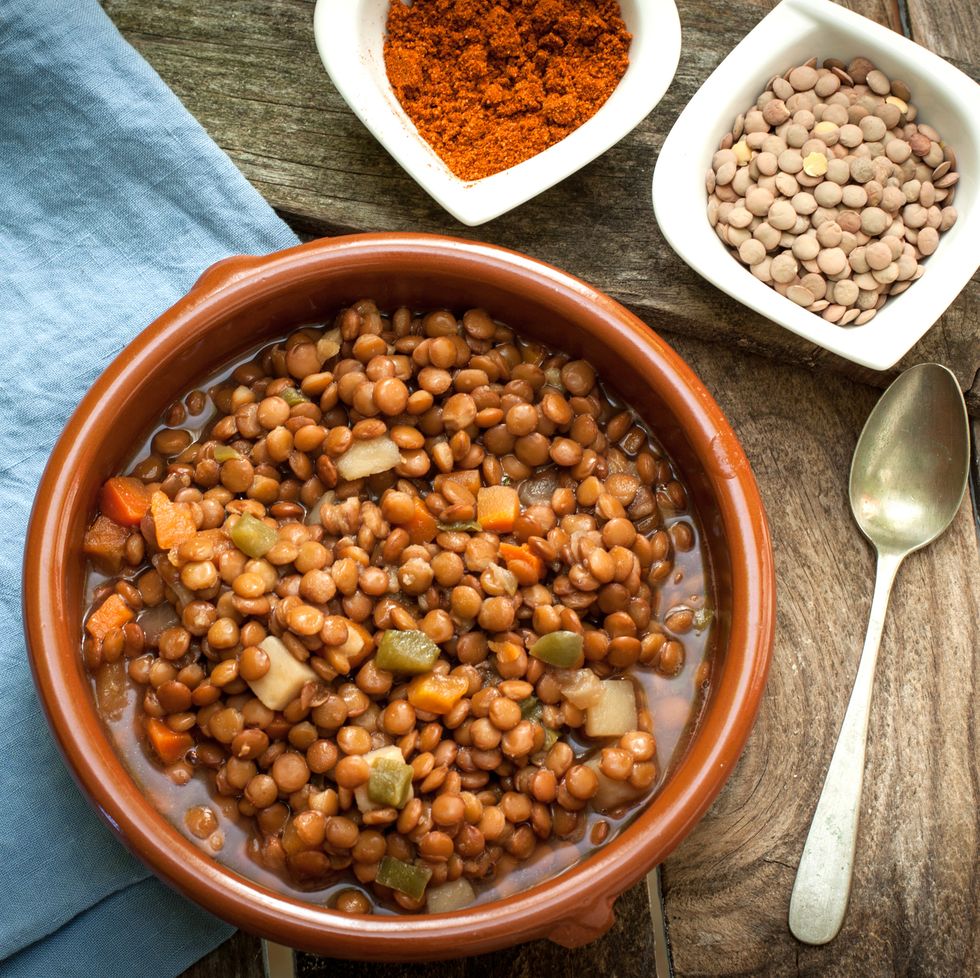
Lentils
Lentils will load your plate with a whopping 3.3mg of iron and roughly 8g of protein per cooked half-cup,reports the USDA—meaning a simple, delicious Italian lentil and broccoli stew is a no-brainer for your next dinner. What’s more, lentils are rich in polyphenols compared to other legumes, a group of antioxidants that reduces your risk of chronic diseases, according to a 2017 review of research.
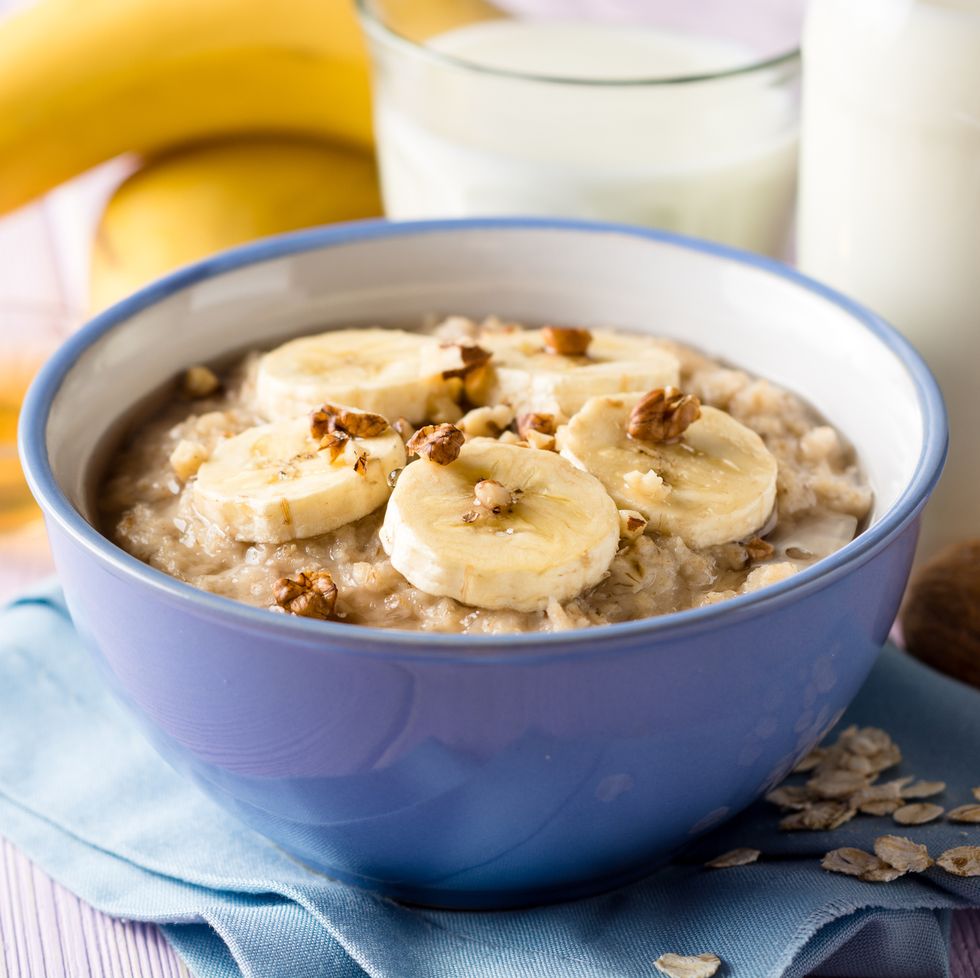
Oats
According to the USDA, 100g of the instant breakfast staple will get you nearly 2.2mg of iron (even if it isn’t fortified). Your ticker will thank you for this meal, too. Since oats are full of fibre, they help lower your risk of heart disease, stroke, obesity, and type 2 diabetes, according to the American Heart Association.

Oysters
Seafood can be an excellent substitute for red meat, and oysters are particularly rich in iron. Slurp down four large molluscs of the mushroom variety and you’ll get 7.8mg, reports the USDA. You’ll also take in almost 5mg of hard-to-get zinc, an essential mineral for your immune health.
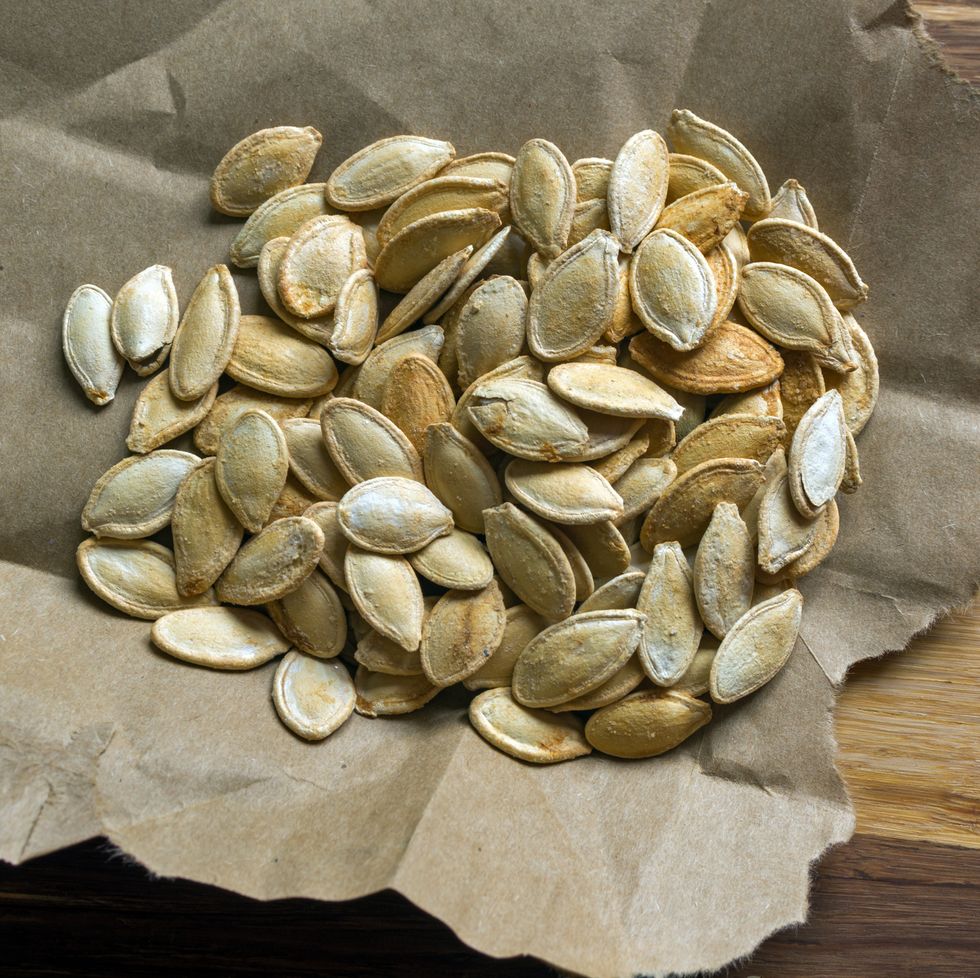
Pumpkin seeds
Just one cup of pumpkin seeds contains nearly 3.7mg of iron. They’re also surprisingly high in protein, healthy fats, magnesium, and potassium. Not sure how to use them? Roast them then add to granola, salads, soups or munch on them as a snack.
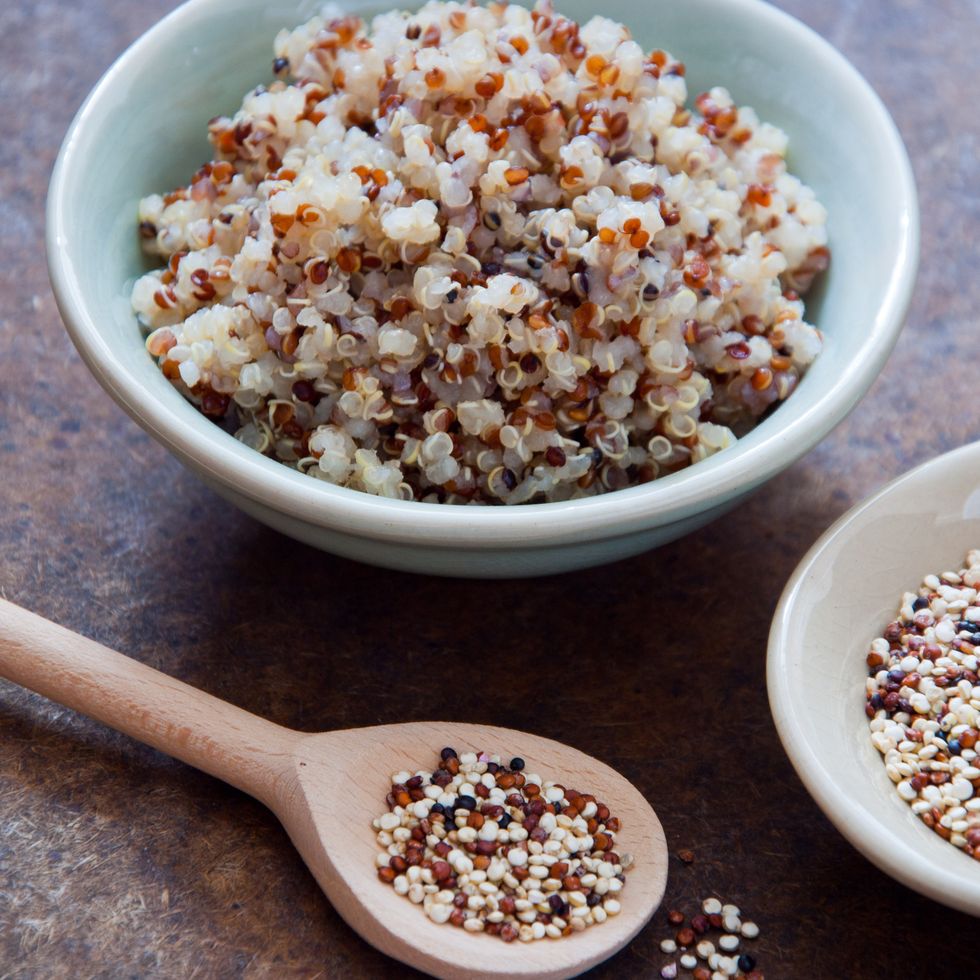
Quinoa
Quinoa can be a bit of a show-off. It's a complete vegetarian protein, for one, packing 8g per cooked cup, meaning, it has all nine essential amino acids that your body can’t make on its own (they're typically found only in animal products). It also offers nearly 3mg of iron in one cup, alongside phosphorus, potassium and magnesium. With its unique texture and nutty taste, quinoa is a great way to switch up your grains.
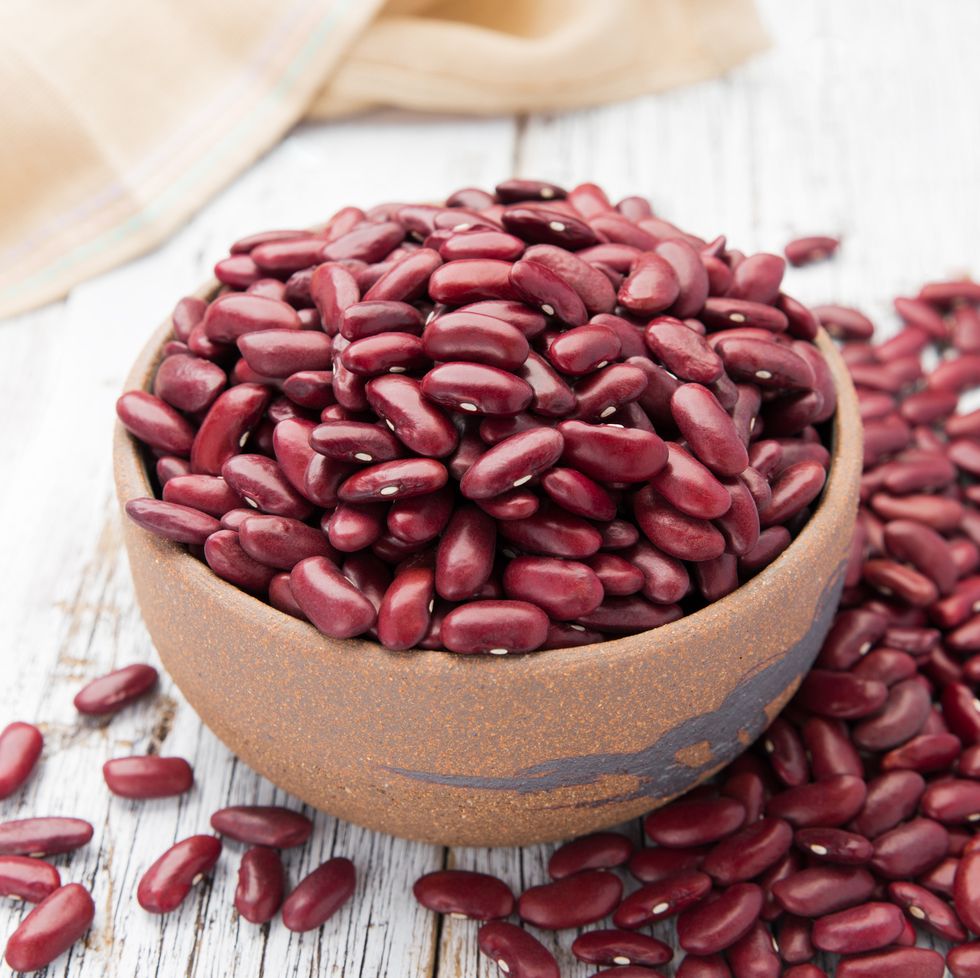
Red kidney beans
One cup of red kidney beans packs 5mg of iron, 13 grams of gut-filling fibre, and 15g of plant protein, reports the USDA. If weight control is a goal, eating one half-cup serving of beans, chickpeas or lentils daily can also help you lose weight and keep it off due to how filling they are, according to a review published in The American Journal of Clinical Nutrition.

Spinach
Popeye knew what he was doing: a half-cup of cooked spinach offers 3mg of the mineral at only 86kJ, per the USDA. Plus, spinach is a nutritional powerhouse: It provides a bit of protein and fibre and a healthy dose of calcium, potassium, folate, as well as vitamins A, C, and K. Enjoy some in a salad, smoothie, or omelette.
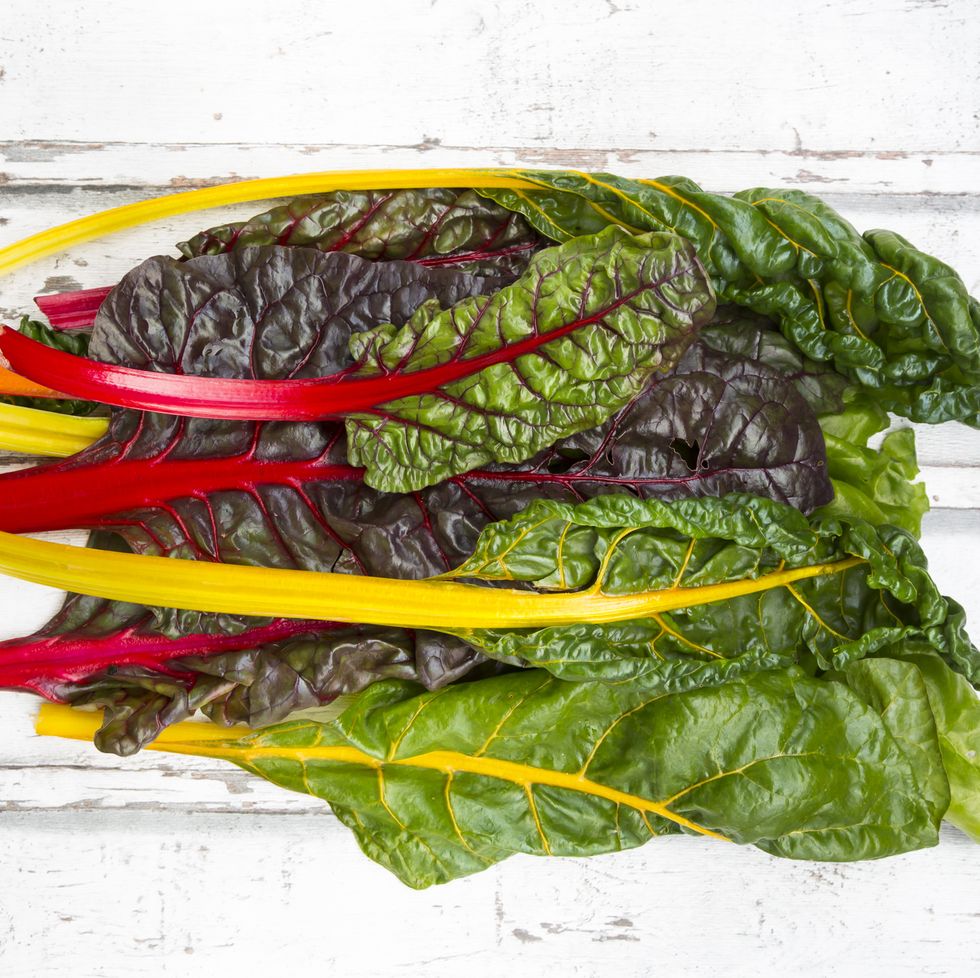
Swiss chard
If spinach isn’t your thing, opt for other leafy greens in your salads, stir-fries, and smoothies. One cup of cooked Swiss chard will get you 4mg of iron, reports the USDA, along with some protein, fibre, calcium, and vitamins A and C. Swiss chard is also an amazing source of heart-friendly potassium, offering 961mg per cooked cup.

White beans
There’s a reason beans are a go-to for plant-based eaters. One half-cup of white beans offers nearly 3.5mg of iron, the USDA says, along with 8.7g of protein and 5.6g of fibre. Next time you grab a can, think beyond a traditional veggie stew or chilli: Cook them into a mushroom risotto, sauté them with cherry tomatoes, or serve them with seared scallops if you enjoy seafood.

Tofu
Though tofu is not the highest in iron, it’s still a viable source for those who eat plant-based. According to the USDA, 84g ounces yields 1.4mg of it, along with more than 9g of protein. The best part is that it's extremely versatile; cook it up in curries, stir-frys, breakfast scrambles, stir-fries and more.







